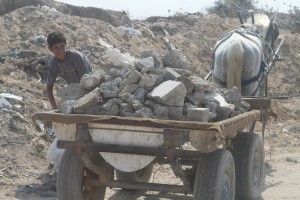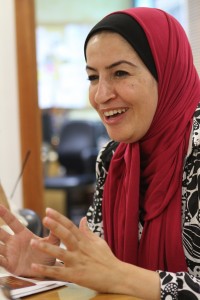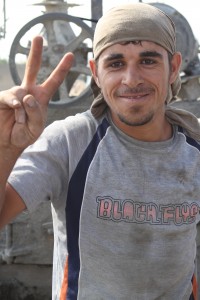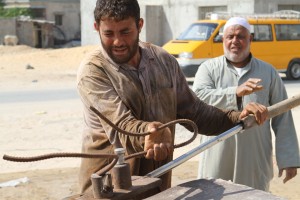Day Three in Gaza: An oasis full of light and hope
By Gerri Haynes
(Gerri Haynes, a former president of Washington Physicians for Social Responsibility, is sending back reports from inside blockaded Gaza. As she did three times before, Gerri organized a team of doctors and other health care providers to work in hospitals and clinics in Gaza in an effort to directly help the people there and to bring attention to the ongoing humanitarian crisis that the Israeli blockade has created. Third in the series.)
The huge garbage dump across the street and the dumpster dump next to the primary Qattan seem to disappear when the lights and books and activities of the Center open to children and families. The energy and hope of Reem buoy up all who encounter her.
Today, we also visited a Qattan outreach program in the Samouni area. During Operation Cast Lead, after being herded together into one small building, twenty-six members of the Samouni family were killed by Israeli fire. Samouni children witnessed many deaths and the destruction of their homes. Now, under the care of Qattan, the family’s children spend four hours/day in healing care: art, physical activities and reading. Testing of these children has proved that this care is helping them to cope with the tragedy that befell their family.Yesterday afternoon, we visited a young man from Bethlehem who was released from prison in the recent prisoner exchange. He is not allowed to return to his home, but speaks frequently on the phone to his Bethlehem friends. For now, he must stay in Gaza. There was a gathering of family members whose loved ones remain in Israeli prisons. Several women spoke to us of their loved ones who have not come to trial and yet remain incarcerated. One woman told us with great sorrow that her son has been in prison for many years – he was jailed at age 11. http://www.parliament.uk/edm/2010-12/2274?mid=50

Gazans gather chunks of concrete from bombed buildings to re-use in construction (Photo by Bob Haynes).
The mental health of Gaza suffers from constant threat and continuous deprivation caused by recurrent military attacks and the siege. Mental health providers we talked with today spoke of “learned helplessness” – and the ways that providers can continue to provide care: group meetings, close supervision, continuing education and family time. The spirit of the people of Gaza is tremendous.
RSS feed for comments on this post. TrackBack URI


